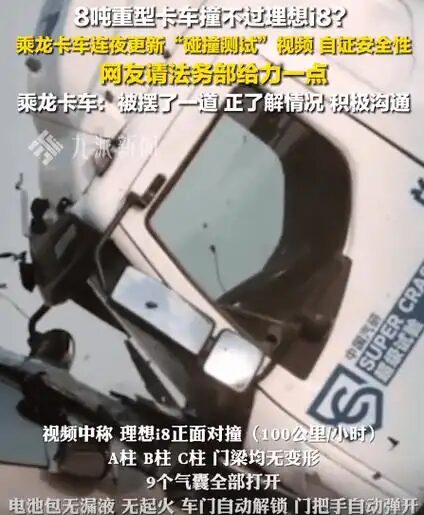A Forced Ceasefire: Why a Li Auto Crash Test Ended in a National Apology and What It Means for China’s Auto Wars

A Forced Ceasefire: The Li Auto Crash Test Controversy Ends in a National Apology
On the evening of August 6, 2025, a fierce public relations storm that rocked the Chinese auto industry finally came to an end. The saga of Li Auto’s controversial crash test concluded with a formal, joint apology from all three parties involved: Li Auto, the China Automotive Engineering Research Institute (CAERI), and Dongfeng Liuzhou Motor.
As I analyzed in a previous post, this was never just about a safety test. It was a marketing stunt that crossed an unspoken line, sparking accusations of a “farce” and exposing the brutal realities of China’s hyper-competitive auto market. The resulting apology is more than just a PR cleanup; it’s a significant indicator of where the industry’s ethical boundaries lie.
The Anatomy of an Apology
The joint statement was a carefully coordinated act of de-escalation, with each party admitting its role in the fiasco.
- Li Auto (The Aggressor): The company sincerely apologized to Dongfeng for the brand damage caused by the test’s promotion. They clarified that the test was only meant to validate their own i8’s passive safety, not to assess any other brand’s vehicle.
- CAERI (The Referee): As the state-backed testing institution, CAERI’s apology was arguably the most significant. They admitted to a “lack of process control” and a failure to clearly and promptly communicate to the public that the Dongfeng truck was merely being used as a “mobile barrier vehicle” meeting specific standards, not as a vehicle whose safety was being evaluated.
- Dongfeng (The Victim): Dongfeng, whose truck was unwillingly cast as the villain, used the statement to reaffirm its commitment to quality, innovation, and fair, legal competition.
But Here’s What Really Matters: The Message to the Market
This public apology signals a powerful course correction, driven by market backlash. It sends two critical messages to the entire industry.
First, it forcefully reinstates an unspoken taboo in Chinese auto marketing. While comparing spec sheets is rampant, physically destroying a competitor’s product for promotional gain is a line that cannot be crossed. Li Auto’s gamble failed, and the apology serves as a public warning to others.
Second, it highlights the immense risk of “weaponized testing.” CAERI’s mea culpa is a tacit acknowledgment that its authority and objectivity were compromised by being drawn into a marketing controversy. Their promise to improve testing management is crucial for maintaining the credibility of all third-party testing in an industry rife with aggressive claims.
Conclusion: An End to the Wild West Marketing?
The Li Auto crash test saga has ended in a forced ceasefire. It’s a clear signal that the “win-at-all-costs” mentality has its limits, and that both the public and the industry will push back against blatantly unfair competition.
While this may curb the most extreme forms of derogatory marketing, the underlying hyper-competition in China’s auto market is not going away. The war will continue, but the weapons may change. Companies will now have to find more sophisticated ways to prove their technological superiority. For consumers, the challenge remains to see past the marketing noise and identify true innovation and quality.

Deeper Dive: Recommended Books for a More In-depth Understanding
For those who wish to gain deeper insights into the topics discussed today, here are some expert-recommended books that I have personally reviewed.
[Inevitable: Inside the Messy, Unstoppable Transition to Electric Vehicles]
- Why this book helps understand the topic: The Li Auto controversy is a prime example of the “messy” transition to EVs described in this book. It showcases how intense competition among new players, especially in the hyper-competitive Chinese market, can lead to aggressive and controversial marketing tactics. This book helps contextualize why companies are taking such huge risks to stand out in the crowded EV landscape.
- 👉 Read Book here
This post may contain affiliate links, meaning I may receive a small commission if you make a purchase through them.
My AI Jazz Project: